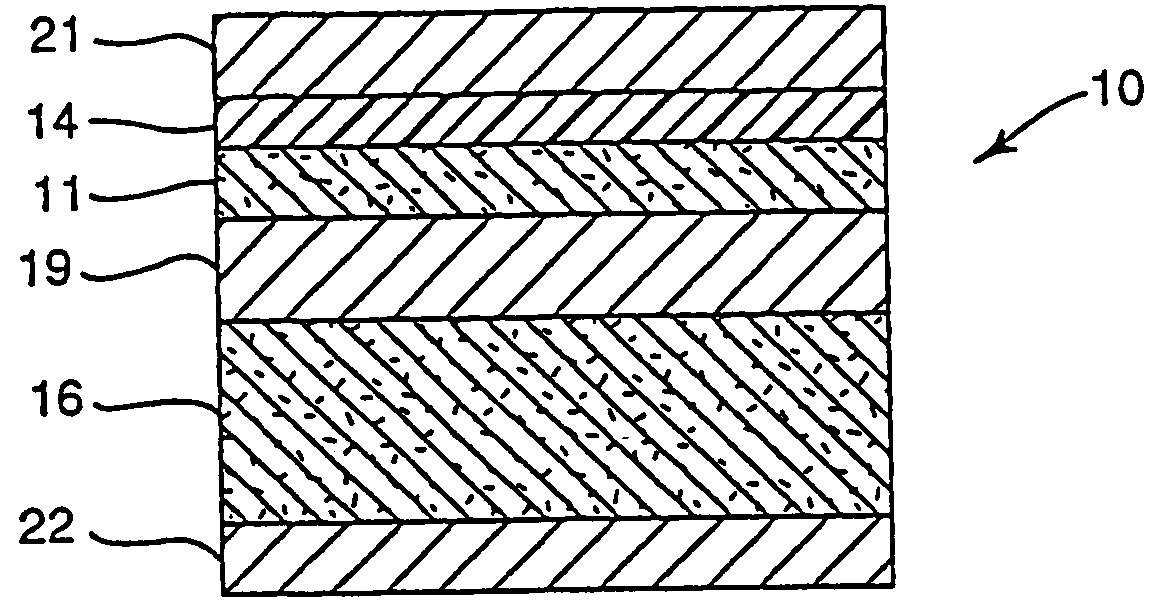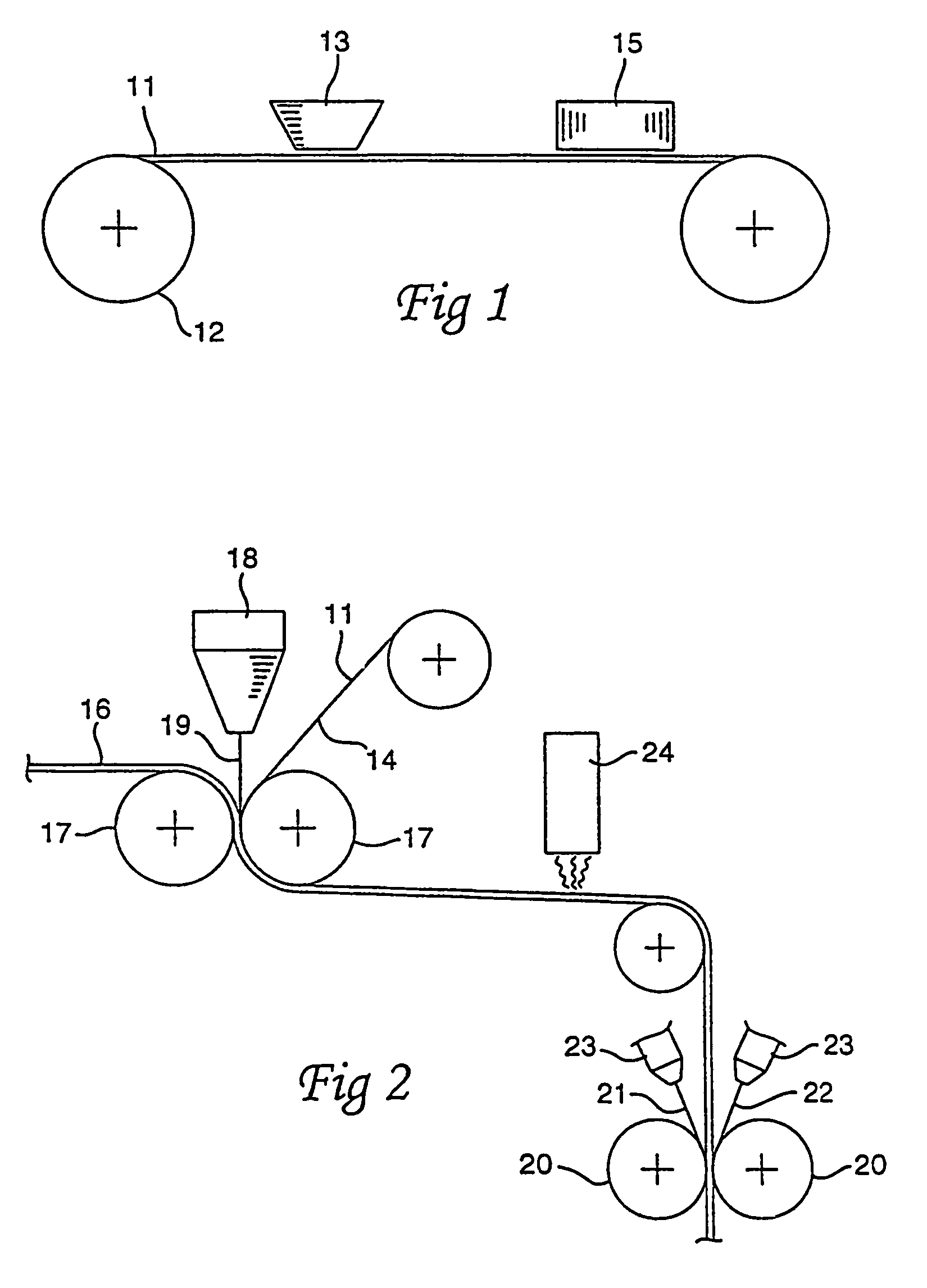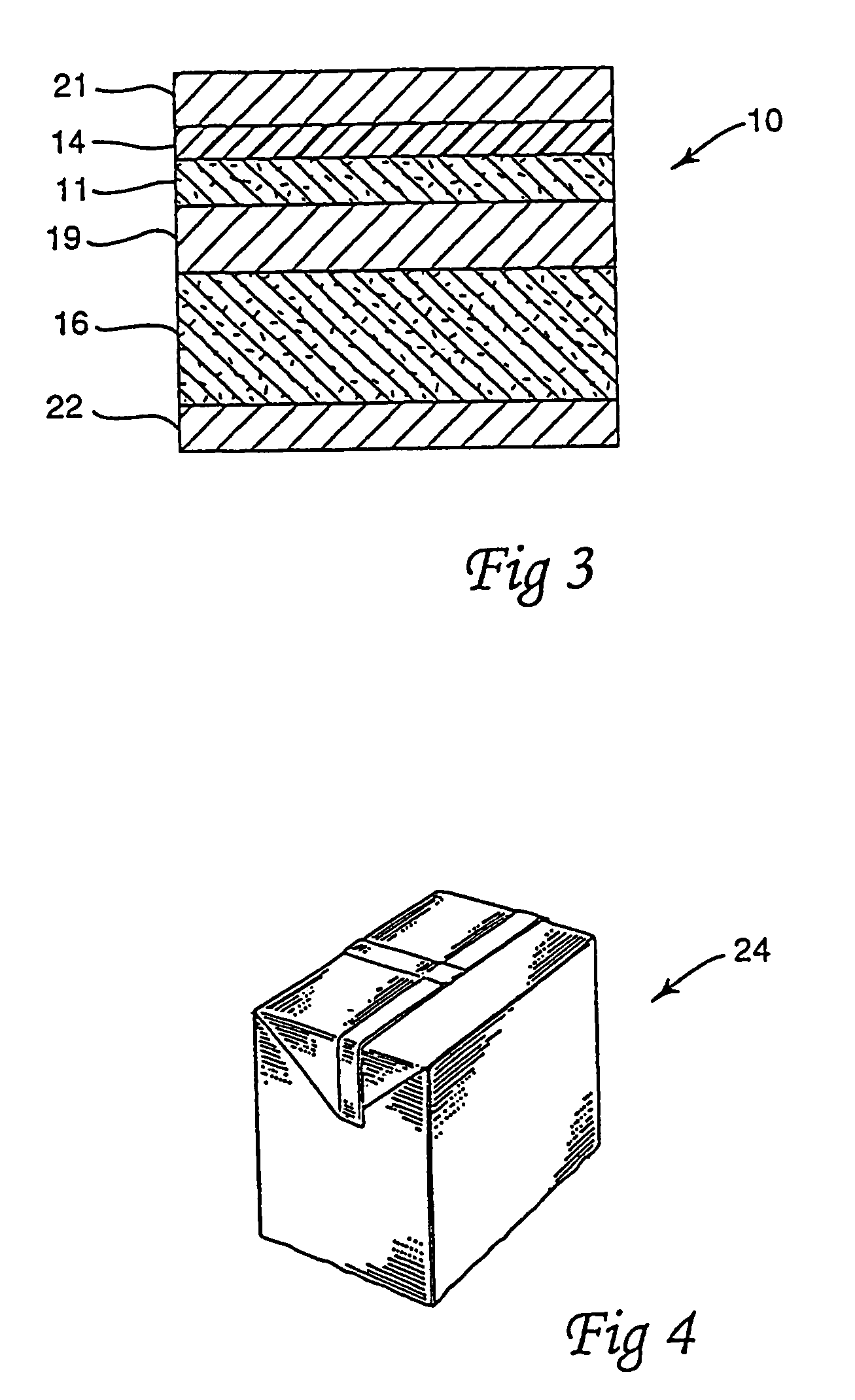Method of producing a laminated packaging material
- Summary
- Abstract
- Description
- Claims
- Application Information
AI Technical Summary
Benefits of technology
Problems solved by technology
Method used
Image
Examples
preparation example i
[0074]An aqueous dispersion of from about 1–5 weight % exfoliated flake-shaped mineral particles (natural, e.g. Montmorillonite, or synthetic, e.g. Laponite) having an aspect ratio of about 50–5000, is blended with an aqueous solution of about 530 weight % of PVOH (having a molecular weight of 16000–200000 g / mol and a saponification degree of 95–100%) at 60–90° C. during 2–8 hours. The dispersion of exfoliated laminar mineral particles may be stabilised by means of a stabiliser additive. Alternatively, the laminar mineral particles are exfoliated in the PVOH solution at 60–90° C. during 2–8 hours. Aqueous ethylene acrylic acid copolymer dispersion is added to the aqueous mixture of PVOH and mineral patches. The resulting mixture is dispersion coated by from about 1 to about 10 g / m2 based on dry coating weight onto a thin plastic coated paper carrier layer. The wet coating is applied as a solution / dispersion in water and dried at a web surface temperature of 100–150° C. The carrier l...
PUM
| Property | Measurement | Unit |
|---|---|---|
| Temperature | aaaaa | aaaaa |
| Temperature | aaaaa | aaaaa |
| Weight | aaaaa | aaaaa |
Abstract
Description
Claims
Application Information
 Login to View More
Login to View More - R&D
- Intellectual Property
- Life Sciences
- Materials
- Tech Scout
- Unparalleled Data Quality
- Higher Quality Content
- 60% Fewer Hallucinations
Browse by: Latest US Patents, China's latest patents, Technical Efficacy Thesaurus, Application Domain, Technology Topic, Popular Technical Reports.
© 2025 PatSnap. All rights reserved.Legal|Privacy policy|Modern Slavery Act Transparency Statement|Sitemap|About US| Contact US: help@patsnap.com



